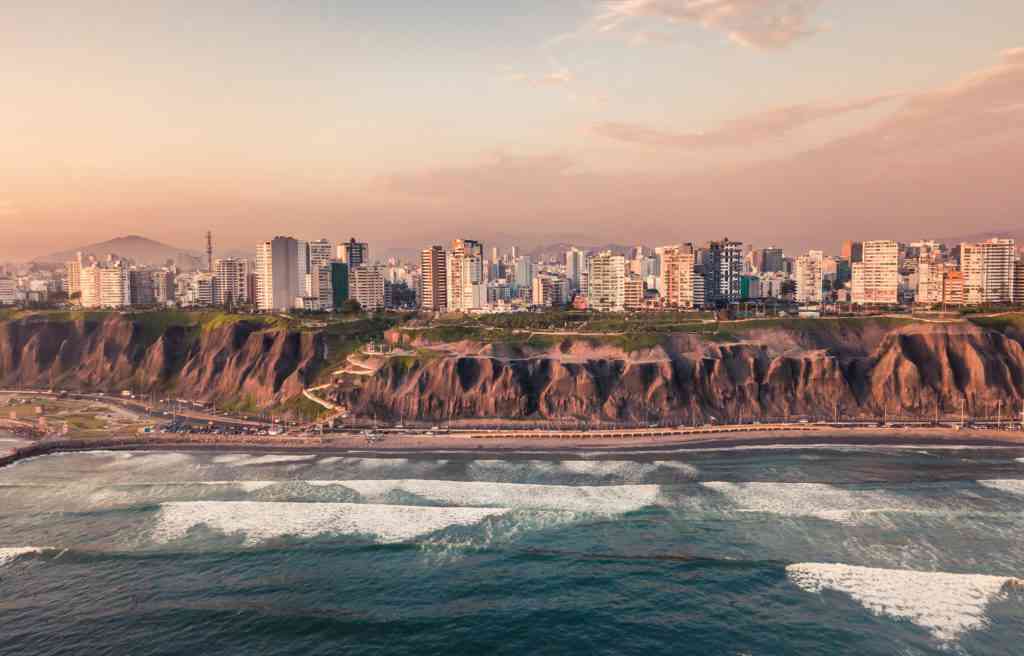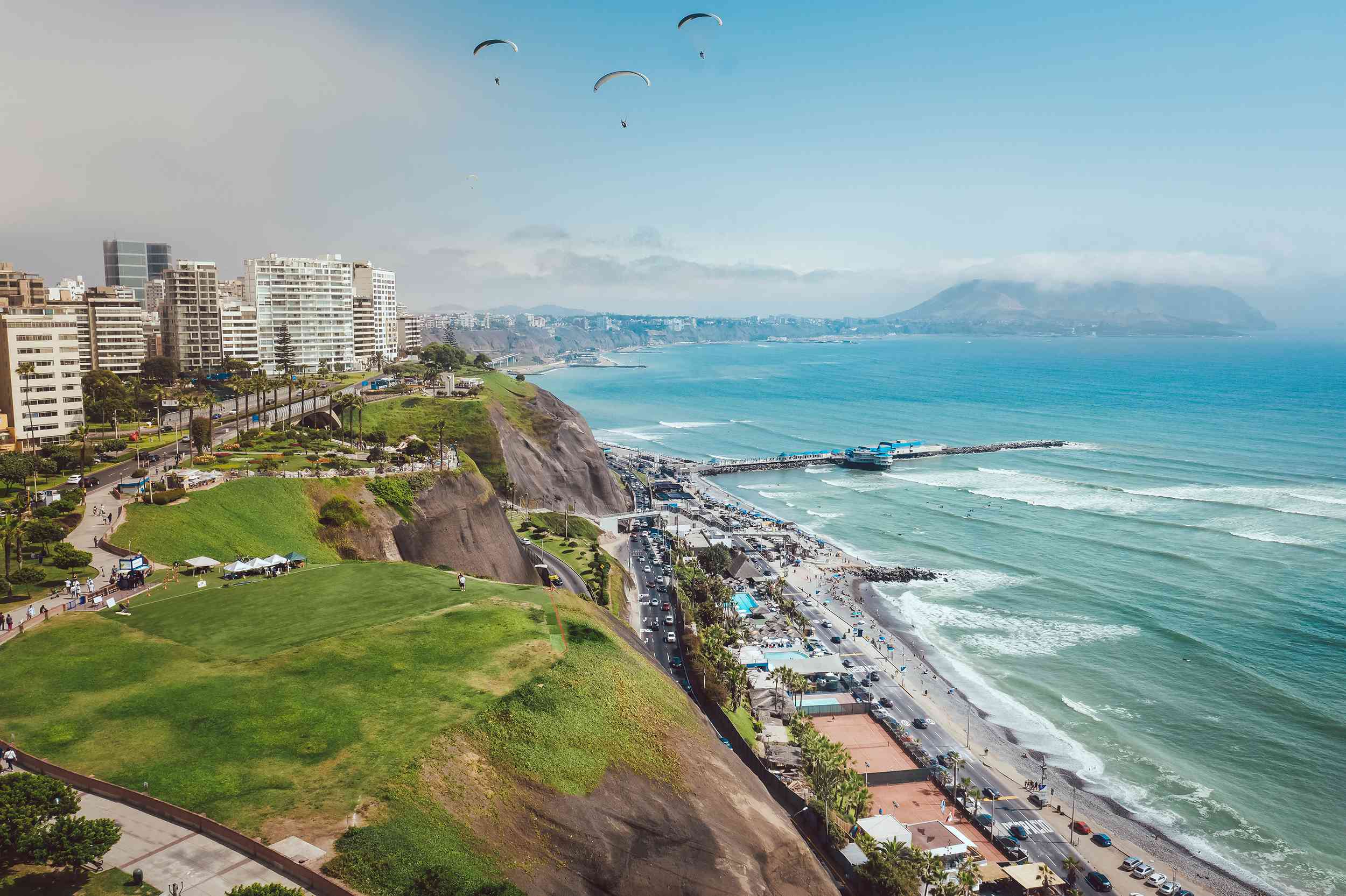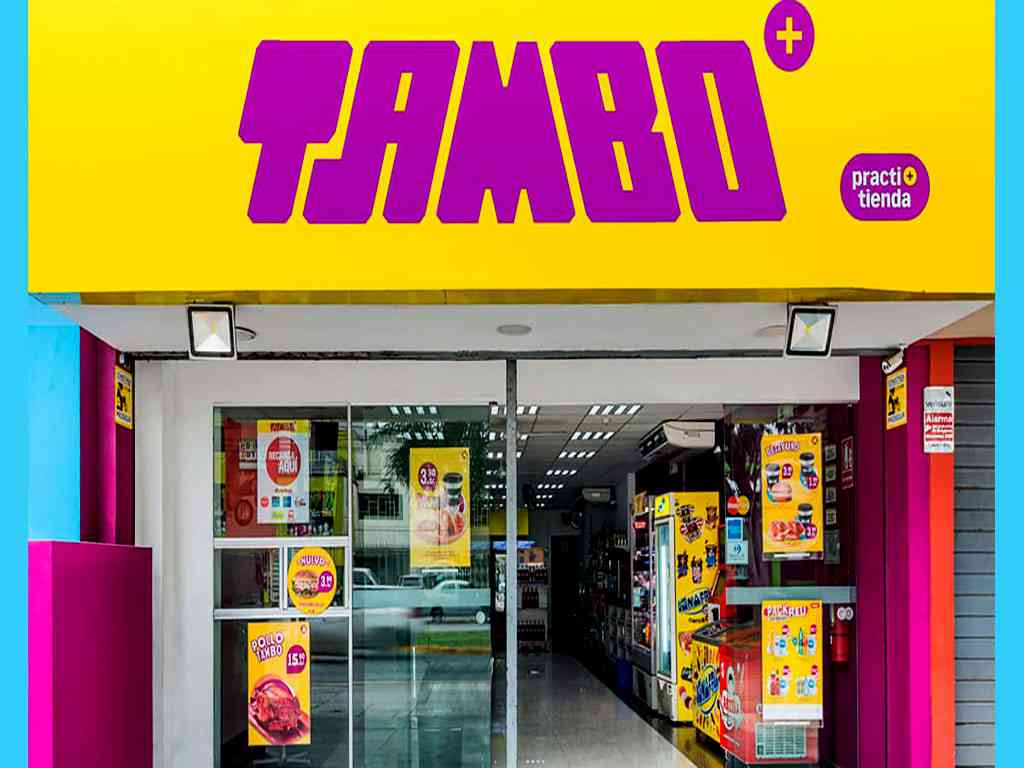Table of Contents
Can You Drink Tap Water in Lima?
No, tap water is not drinkable.
Tap Safe includes data from many publicly available sources, including the WHO (World Health Organization), CDC (Center for Disease Control), and user submitted databases, but unfortunately there's not enough data about Lima.
To see user submitted ratings of the water quality for Peru, see the "User Submitted Ratings" box on this page.
Lima Tap Water
Some of you might still be unconvinced about why I mentioned that Lima tap water doesn’t taste good, and some people use it as a soap. I brought up this issue to bring up the fact that many cities in Latin America have inferior water quality. For instance, in some parts of Lima, you’re not supposed to just drink municipal tap water. The entire district stays in the slums, and the most polluted part of the city is among the slums.
But the tap water here is fine for drinking, of course, for other purposes, such as watercoloring. There’s one little secret in living in Lima – the people in the slums buy pink flowers from the market, mix them with water and put that water in their tubs. And even if the water tastes bad, they think it tastes good since there are no local cleaners to clean it up.
This story is funny because it illustrates just how much people in Latin American countries take care of their water. They use it for everything, for cooking, for bathing and for showering. If it were up to me, I’d give these people the prize that they want and let them keep the water. And since I live in America, I have to share the responsibility. Lima tap water tastes good – all I have to do is take a bath, throw a bit of water on my skin, and I’m set.
Tap water in Lima, Peru is not safe to drink. Water quality is a massive issue in Peru and particularly in Lima. To ensure the health of the country in general, for backpackers, and tourists; Peruvians are accustomed to buying well water for drinking or by boiling. Boiling water makes it safe to drink in the event of some biological contamination. It can kill off bacteria and other organisms in a batch of water only by bringing it to boil.

Peru fails to meet the WHO standards for drinking water. Currently, there is no national movement to improve potable water standards.
Source of Water in Lima, Peru
The primary source of tap water in Lima comes from the River Rimac. And some portion is taken from groundwater. The Rímac River is located in western Peru and is the most critical source of potable water. The river is part of the Pacific watershed and has a length of 204 km. The river begins in the highlands of the Huarochirí Province in the Lima Region, and its mouth located in Callao, near Jorge Chávez International Airport.
To have enough water supply in Lima, for more than 8 million inhabitants one option in the discussion is the exploration of new water sources from the Atlantic side of the Andes (catchment of the Mantaro River) and deviation to the rivers of the Pacific side. To determine the potential extra water supply that could be introduced into the water system of Lima. The average rainfall contribution from the three catchments on the Pacific side and the sub-catchments on the Atlantic side was analyzed. The projects Marca I and III are already in operation, while Marca IV (Huascacocha) is in the execution phase and Marca II and V are still under deliberation. The yearly rainfall contribution of the Rimac River catchment is 41 percent (395 mm/a), while all planned Marca-projects would contribute approx. 23 percent.
Water in Lima
Recently I traveled to Lima, Peru, on a business trip. My intent was to attend the annual World AIDS Conference. Still, I ended up spending nearly three weeks in Lima, visiting many local area businesses, drinking tap water, and talking to many local residents. One of the most exciting things I did while talking with a hotel near Calle 13 de Menor. The manager told me that they had recently seen a large shipment of bottled water from the United States to Lima. He believed that this could be why incidents of hepatitis had risen so dramatically in that area.
He told me that most of the cases in his area were probably the result of valley contamination. I asked him why ica vista was contaminated. He explained that farmers there use insecticides and other chemicals on their crops to protect them from pests and that the chemicals get into the water table. He said that every time that someone comes in from the city to get water from the tap, they are risking the chances of getting one of these harmful chemicals into their body through their skin. I then asked him what he thought about the recent reports that the Peruvian government would be creating a new transboundary water distribution system?
He explained that it would be similar to the old system, only much more powerful. He also noted that the problem of scarcity of potable water had become much worse in the past few decades and that Lima was seeing a population growth that is unprecedented in the past 50 years. He also explained that the problem of crime in the country also led to increased scarcity of clean water. He also said that some old and patronized hotels had built their infrastructure on water that was not fit for human consumption. I know that I don’t need to travel to other countries to find examples of how people living in poverty suffer from a lack of adequate resources. Still, I hope that my experience in Lima will cause other executives to pay more attention to the importance of water availability and quality before they make decisions that could lead to disastrous consequences.
Lima Drinking Water
There’s a growing global concern that environmental quality isn’t always well protected and that water usage is highly susceptible to depletion. Lima, the capital of Peru, is in danger of being hit by drought. This increasing global concern highlights the need for more efficient ways of managing water. The government and non-profit organizations are looking for more efficient ways to purify water. They are working on different projects aimed at improving water quality and quantity.
One of these projects involves implementing new rules for Lima’s water tariff, including mandatory measures to limit or end-use. This most common household appliance delivers potable water in rural areas. Sedu is used to treat wastewater produced in industries, resulting in the dispersal of harmful chemicals into the environment. Other impurities that are released through this method are benzene and volatile organic compounds (VOCs). The amended tariff aims to limit the number of chemicals that reach the community and restore the ecological system through better management and regulation of wastewater.
Another environmental project aiming to improve the quality of the environment includes installing automated filtration systems at homes, office buildings, and community facilities. The installation of these systems, which include a countertop model, improves the overall quality of tap water. It also reduces the amount of VOCs released into the atmosphere. The proposed amendments aim to ensure that the public has access to clean and pure water and to improve the ecological system through better management and regulation of wastewater. These new rules and regulations aim to ensure that Lima becomes a sustainable, livable city in the future.
Bottled Water in Lima
If you have ever driven through Lima, Zambia or other cities in the World, you know about the drinking water that most people have at home. It is usually tap water from the municipal supply, which comes from a well that is generally just outside their front doors. If they want to go out for a drink, it can be risky. You don’t even get to choose which faucet you drink from in many places because all the homes and businesses are using the same tap water. This is not only unsanitary but also very expensive to use.
One of the best ways to assure yourself that you are getting a good quality water bottle in Lima is to go to one of the many bottled water kiosks located throughout the city. Most of the vendors are from the US and do not even speak English very well, so you might be having your water quality checked very quickly. These vendors usually give you a free sample of their filtered water, along with some literature on water purification methods. The price per bottle is generally pretty low, and sometimes they give you five bottles for the price of one bottle of bottled water from a government source. There are also quite a few places where you can purchase one of these cheap and clean drinking water bottles and bring them with you when you go out visiting. Some vendors even provide replacement filters if you find that yours were to become damaged during your trip.
Suppose you love the taste of tap water but are concerned about the environmental effects of using so much freshwater. In that case, you may wish to think about using a home water purification system. There are many great options to choose from, and depending on your budget, you can find a plan that will last you for many years to come. Just remember, if you want great-tasting water, you are better off buying bottled water than you are using tap water from the municipal supply.
Water Quality in Lima
If you are traveling to Lima, Peru, on vacation, you should take the time to learn a little about the water quality in Lima before you go to bat. Water quality issues have plagued the Peruvian people for a long time and can sometimes get pretty bad, especially if you don’t know where to look. When I was in Lima, there were no drinking fountains in the area, so I had to find other ways to quench my thirst. Fortunately, when I went out to eat, the locals there knew a thing or two about where to get good water to quench my thirst, and when they did, I got perfect water.
It didn’t take me very long to figure out that if I was going to get good water, I would have to do a bit of research first. I knew that I needed to find out about the availability of different types of water in the area, so I headed over to the closest municipal park that was close to my hotel. I quickly realized that I was in way over my head in research time, but I decided that it wouldn’t hurt to get started. After checking out all of the different places near the park where they had water, I realized that I would need to know more about the filtration process that each water company used. That way, I would be able to trust the water that I was about to drink.
I learned that it is perfectly acceptable to drink tap water in Lima. I did not realize that the water that most people in the country drink is contaminated. In fact, it is widely considered to be the worst water in the world. I am not saying that it is unsafe to drink, but I will say that it is definitely not something that I want to consume daily. I have been warning people about the terrible quality of their water for years, and I hope that I helped put their minds at ease when they realized what was happening in their water.
Other sources:

The estimated price of bottled water
$0.78 in USD (1.5-liter)
USER SUBMITTED RATINGS
- Drinking Water Pollution and Inaccessibility
- Water Pollution
- Drinking Water Quality and Accessibility
- Water Quality
The above data is comprised of subjective, user submitted opinions about the water quality and pollution in Lima, measured on a scale from 0% (lowest) to 100% (highest).
Related FAQS
Reminder
Always take extra precautions, the water may be safe to drink when it leaves the sewage treatment plant but it may pick up pollutants during its way to your tap. We advise that you ask locals or hotel staff about the water quality. Also, note that different cities have different water mineral contents.
Sources and Resources
Sources Cited
Current Weather in Lima
LIMA WEATHERSome of the Popular Convenience Stores in Lima

- Tambo+
- Fast Market Sajonj
- Repshop
- Lucky Supermarket
- Wong Cencosud
- Cremoladas Angelica
- Mass Garzón
- Listo!
- Snack Siroco
- Minimarket Bailon
- AI NI
- TU MARKET
Estimated Price of Bottled Water
| Volume | SOL | USD | EUR | GBP |
| 1.5-liter | S/ 3.16 | $0.94 | €0.86 | £0.76 |
| 0.5-liter | 1.5 | $0.45 | €0.41 | £0.36 |